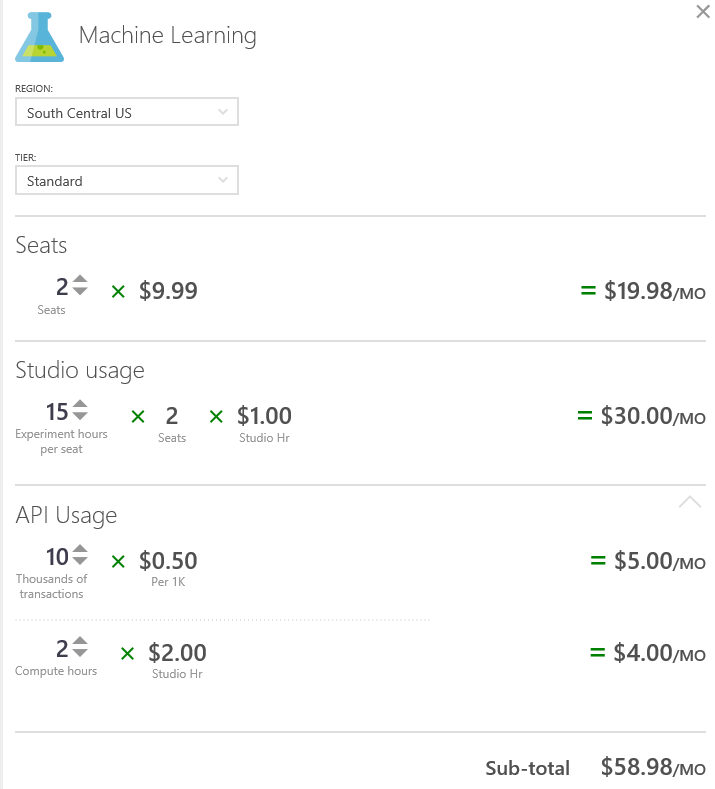Commoditization of Analytics: Azure Machine Learning Changes the Rules
Commoditization of Analytics: Azure Machine Learning Changes the Rules
Technical revolutions have been occurring at a breakneck pace these days. One only needs to read “Popular Science” to see all the amazing things happening in technology—from biotech to transportation to information technology.
In particular, predictive analytics technology is changing fast! I executed my first business intelligence project back in 1998, but the technology seemed to change incrementally until 2015 when suddenly I felt a disturbance in the analytics force. When I say disturbance, I’m talking about the kind of change that has me up at night dreaming about the possibilities (with the occasional nightmare) or missing interstate exits because I’m trying to figure out which classification model might be better for a membership churn scenario.
Azure Machine Learning : Analytics as a Commodity
According to Wikipedia, the definition of commoditization is, “The process by which products become simple commodities in the eyes of the market or consumer.” That definition might be a bit of a stretch for analytics, but in my opinion we’re close. The only component I see missing is competition. Right now, the only game in town when it comes to cost-effective, scalable, and seamless to deploy machine learning solutions is the Microsoft Azure Machine Learning service. If you question my reasoning on this, just look at the pricing calculator and tell me if you disagree. The screenshot below is a fair representation of the monthly cost to do predictive analytics for a small to medium-sized business running a customer churn model.
Cost of Doing Predictive Analytics with Microsoft Azure Machine Learning

In this pricing example we make the following assumptions:
- There are two users of the Machine Learning Studio application at $9.99 per user. One user is a data scientist and the other is an application developer who is integrating the Machine Learning model API with the line-of-business applications.
- 15 hours of experiment time to build and shape a customer churn model. 15 hours is a lot of time when you consider that you are only billed this metered time when experiments are processing. You don’t pay for your time writing code or configuring the data plumbing in the experiment.
- API usage in this example assumes that a tenant is going to evaluate 10,000 customer records every month to detect churn. Some of you reading this have more and some less, but based on the cost of 50 cents per 1000 calls you can see how cheap this part of the service is.
- Compute time on the API calls was set at 2 hours which is a high guess. This would be a smaller number in most of our projects.
What Does it Cost to Lose One Customer?
There you have it: $60 dollars/month for a typical small to medium-sized organization to detect churn of their customers! And if you assume the model doesn’t have to be rebuilt, the future cost will be even less as the team will just be retraining the existing model. This is the reason why I believe that machine learning is becoming a commodity. It wasn’t that long ago that only enterprise organizations could do this type of analysis and only at a substantially higher cost.
Is it Really That Simple?
In the past, two of the biggest barriers to predictive/prescription success were building the model and operationalizing the solution. In regards to the model building, in the Azure Machine Learning Studio, we see a visual experiment interface that drastically reduces the complexity of a model and provides an easy validation component that ensures the model meets the needs of the designer. There are good design patterns and documentation to follow from the community to help a designer learn how to evaluate and choose the best model for their machine learning problem.
In regards to deployment, Microsoft addresses the operational questions by enabling the designer to publish the model as web service with a matter of mouse clicks. Application developers looking to integrate line-of-business applications to published machine learning APIs will be excited to learn that not only are the APIs easy to work with, but even the code is auto-generated as sample stubs which can be easily refactored into their code base. What might have taken days or weeks to implement in the past can now be accomplished in hours.


SHARE